Pav Bhaji recipe is one of the most loved dishes among food lovers. Indian street food is an explosion of flavors, and Originating from Mumbai, this dish consists of a spicy, buttery vegetable mash served with soft, toasted pav (bread rolls). Whether you’re craving a quick snack or a fulfilling meal, Pav Bhaji is a perfect choice. In this blog, you’ll learn how to make an authentic, restaurant-style Pav Bhaji at home with step-by-step instructions.

Introduction to Pav Bhaji
Pav Bhaji is a flavorful and popular street food that first emerged in Mumbai, India. It was initially created as a quick meal for textile mill workers in the 1850s. Over time, it gained immense popularity and became a favorite snack across India.
The dish consists of a spicy, mashed vegetable gravy (bhaji) served with butter-toasted pav (bread rolls). The irresistible aroma of butter, the richness of spices, and the smooth texture of bhaji make it an all-time favorite.
Whether you’re preparing it for a family gathering or a weekend treat, Pav Bhaji is guaranteed to impress everyone. Now, let’s dive into the ingredients and the step-by-step process to make this mouthwatering dish.
Pav Bhaji Preparation Time Chart
| Task | Time Required |
|---|---|
| Washing & Chopping Vegetables | 15 minutes |
| Boiling Vegetables | 10 minutes |
| Preparing the Bhaji | 20 minutes |
| Toasting Pav | 5 minutes |
| Garnishing & Serving | 5 minutes |
| Total Time | 55 minutes |
This breakdown ensures a smooth cooking process, helping you prepare delicious Pav Bhaji efficiently
Tips to Make the Best Pav Bhaji
- Use fresh vegetables to enhance the taste.
- Mash the bhaji properly for a smooth texture.
- Use butter generously for an authentic street-style taste.
- Adjust spice levels according to your preference.
- Toast the pav well with butter for a crispy texture.
Ingredients for Pav Bhaji
To make authentic Pav Bhaji, you’ll need the following ingredients:
For Bhaji (Vegetable Gravy)
- 2 large potatoes – boiled and mashed
- 1 cup cauliflower – finely chopped
- 1/2 cup green peas
- 1/2 cup capsicum – finely chopped
- 1/2 cup carrots – finely chopped
- 2 large tomatoes – pureed
- 1 large onion – finely chopped
- 1 tablespoon ginger-garlic paste
- 2 green chilies – finely chopped
- 1/2 teaspoon turmeric powder
- 1 teaspoon red chili powder
- 1 teaspoon cumin seeds
- 1 teaspoon garam masala
- 1 tablespoon Pav Bhaji Masala
- Salt to taste
- 2 tablespoons butter
- 1 tablespoon oil
- 1/2 cup water
For Pav (Bread Rolls)
- 8 pav (dinner rolls or burger buns)
- 2 tablespoons butter
- 1/2 teaspoon Pav Bhaji Masala
For Garnishing
- 1 small onion – finely chopped
- 2 tablespoons fresh coriander leaves – chopped
- 1 lemon – cut into wedges
- Extra butter for topping
Pav Bhaji Recipe Step by Step
Now, let’s start making Pav Bhaji step by step.
Step 1: Boiling the Vegetables
- In a pressure cooker, add potatoes, cauliflower, green peas, carrots, and a pinch of salt.
- Add 1 cup of water and cook for 3-4 whistles until the vegetables become soft.
- Once cooked, mash the vegetables with a potato masher until smooth. Set aside.
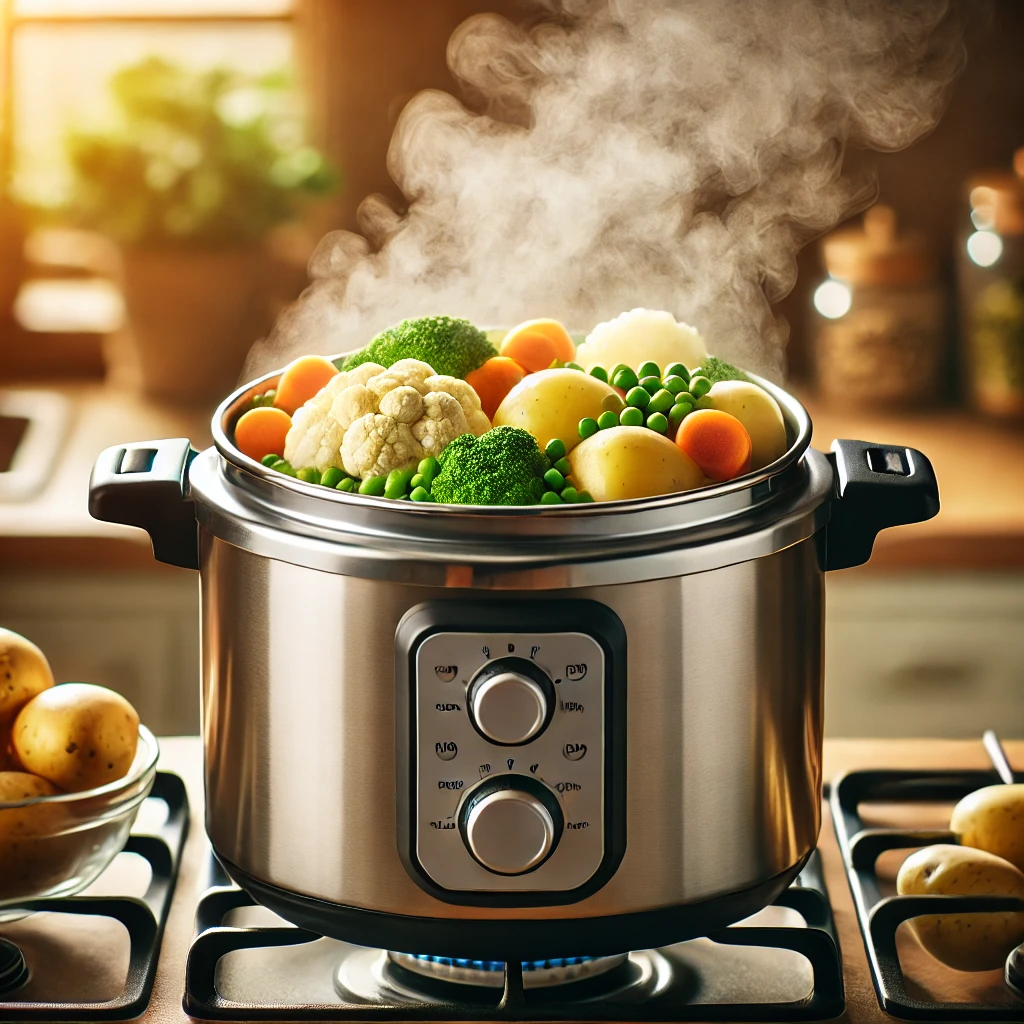
Step 2: Preparing the Bhaji
- Heat 1 tablespoon oil and 2 tablespoons butter in a pan.
- Add cumin seeds and let them splutter. Then, add chopped onions and sauté until golden brown.
- Add ginger-garlic paste and green chilies, sauté for a minute.
- Add pureed tomatoes and cook until the oil starts to separate.
- Mix in turmeric powder, red chili powder, Pav Bhaji masala, and salt. Cook for 2 minutes.
- Add the mashed vegetables and mix well. Adjust the consistency by adding water.
- Cook for 5-7 minutes on low flame, stirring occasionally.
- Finally, sprinkle garam masala and mix well.
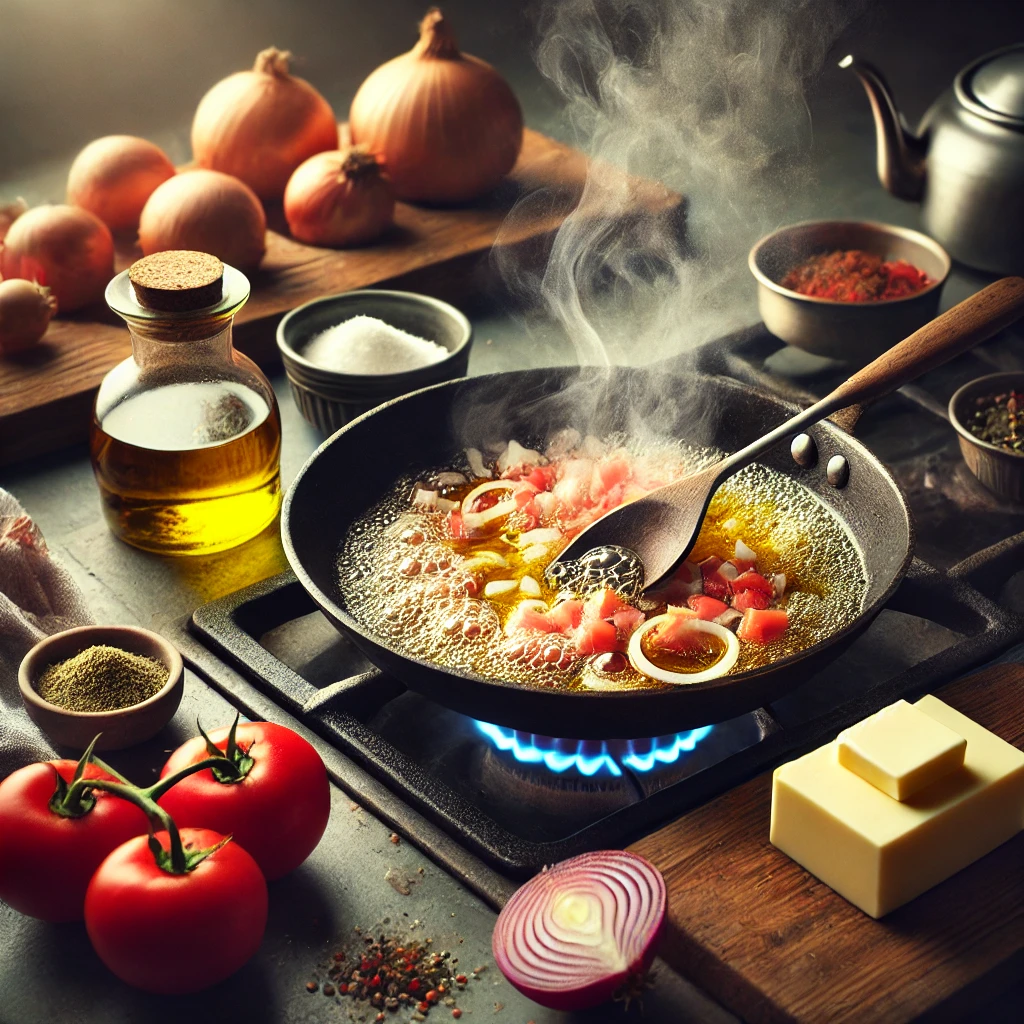
Step 3: Toasting the Pav
- Heat a tawa (griddle) and add butter.
- Sprinkle some Pav Bhaji masala for extra flavor.
- Slice the pav in half and toast them on both sides until golden brown.
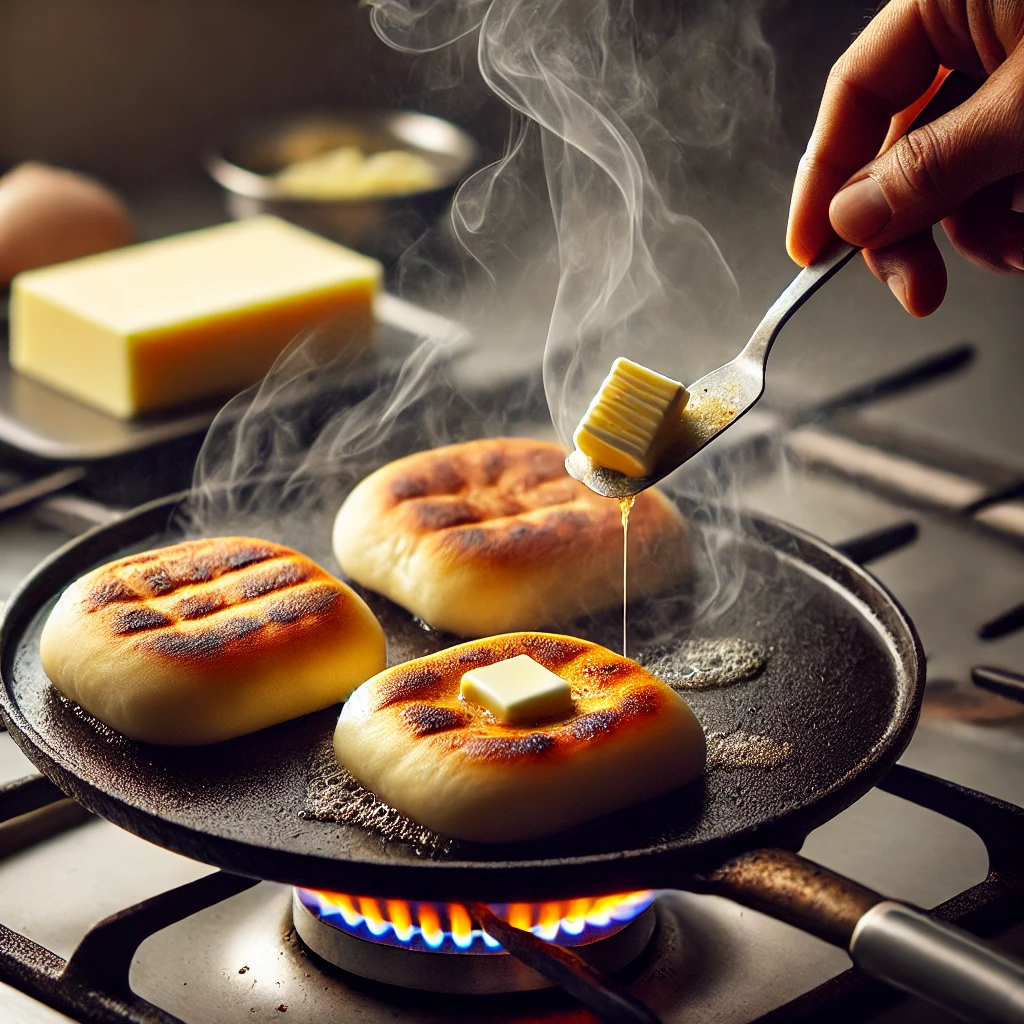
Step 4: Serving Pav Bhaji
- Serve the hot bhaji in a bowl, topped with butter.
- Garnish with chopped onions, coriander, and lemon wedges.
- Serve with toasted pav on the side.
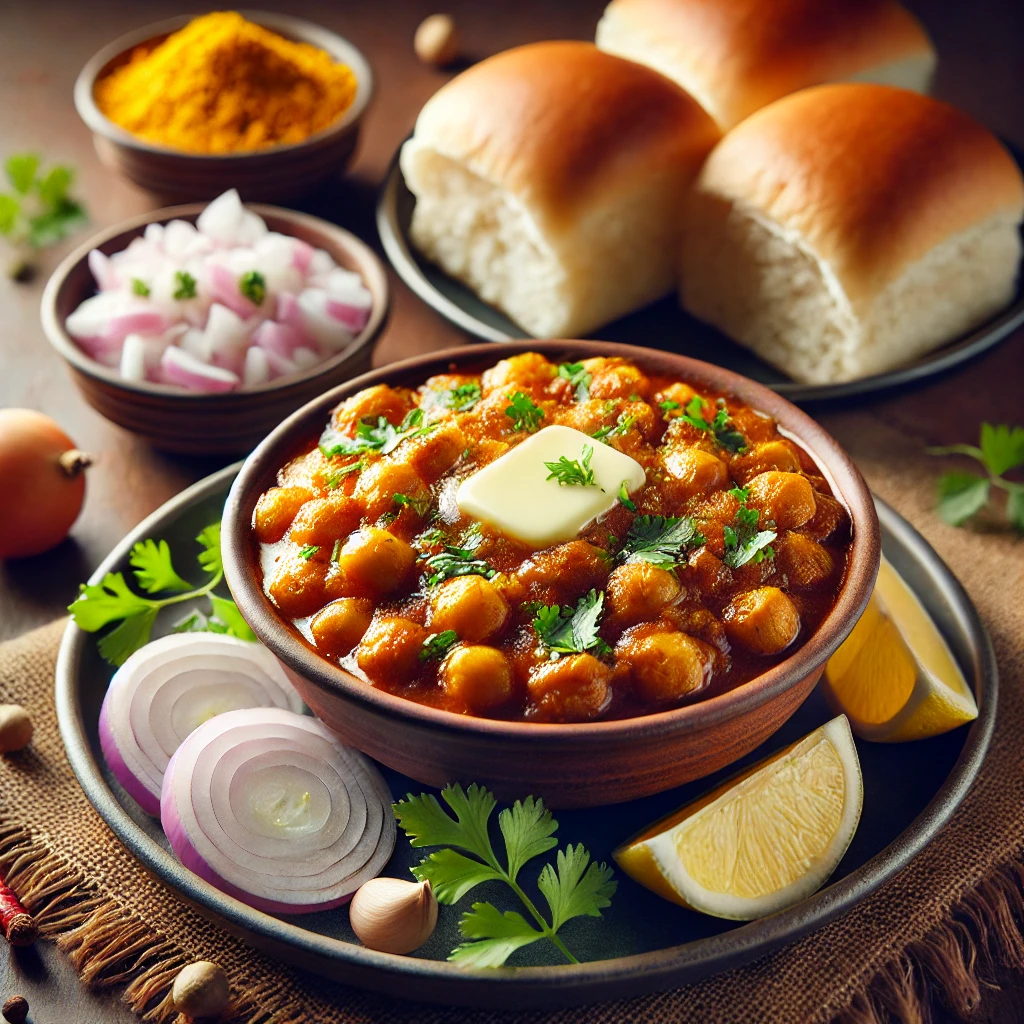
Variations of Pav Bhaji
- Jain Pav Bhaji – Made without onion, garlic, and potatoes. Raw bananas are used instead.
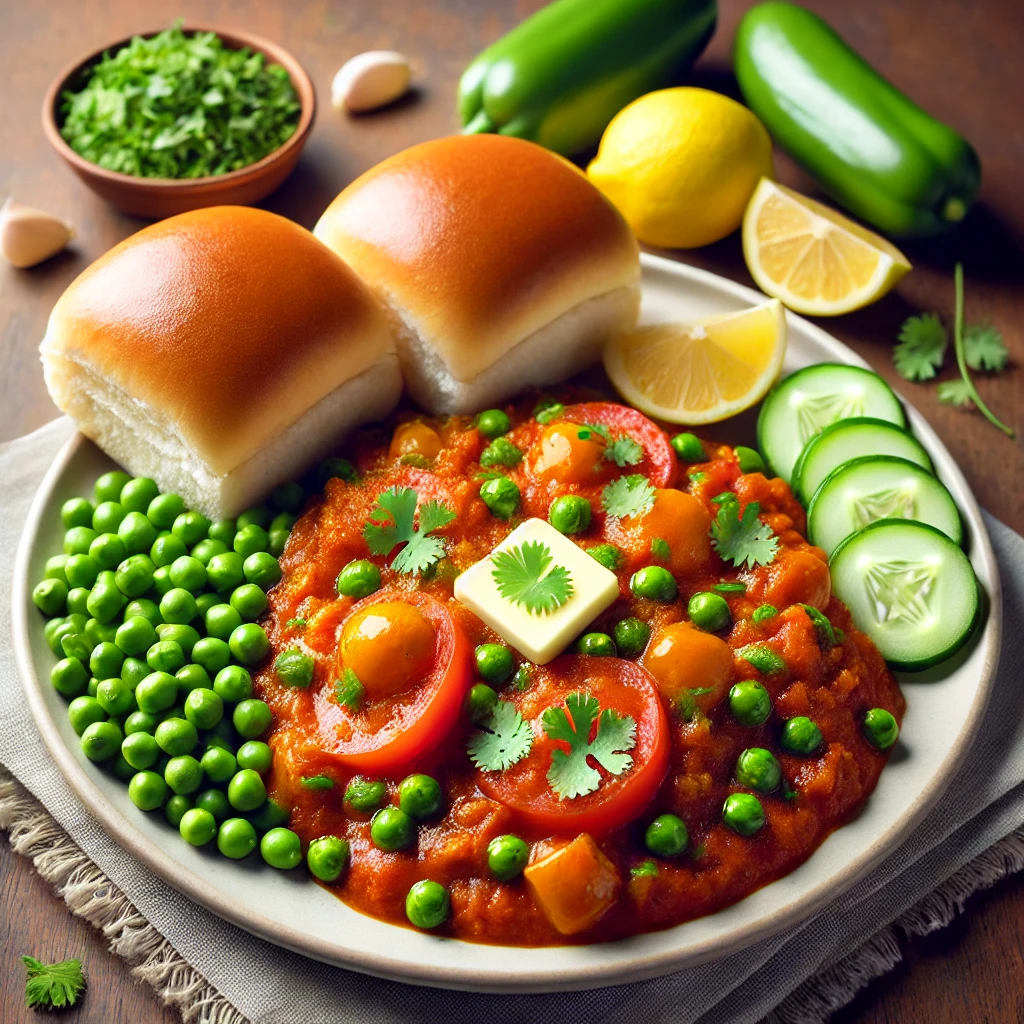
- Cheese Pav Bhaji – Topped with grated cheese for extra richness.
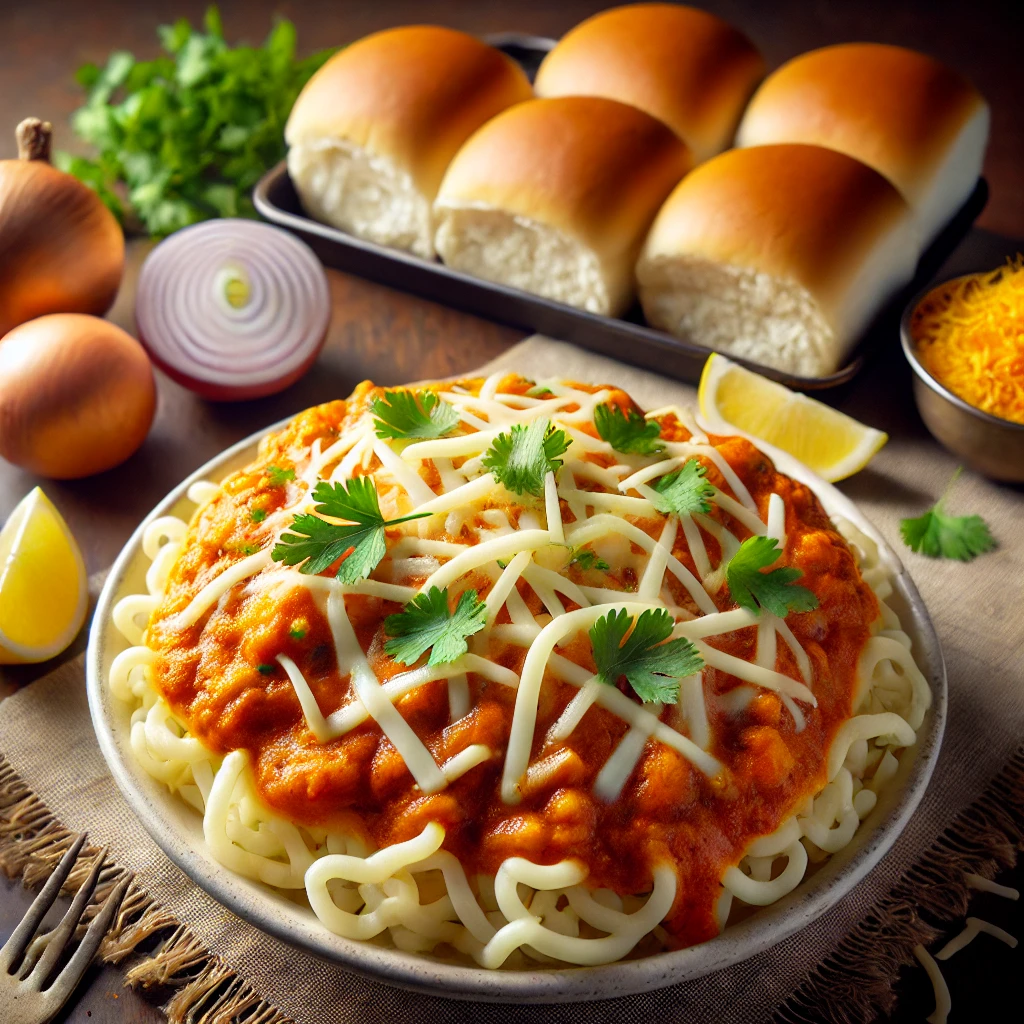
- Khada Pav Bhaji – The vegetables are not mashed completely, giving it a chunky texture.
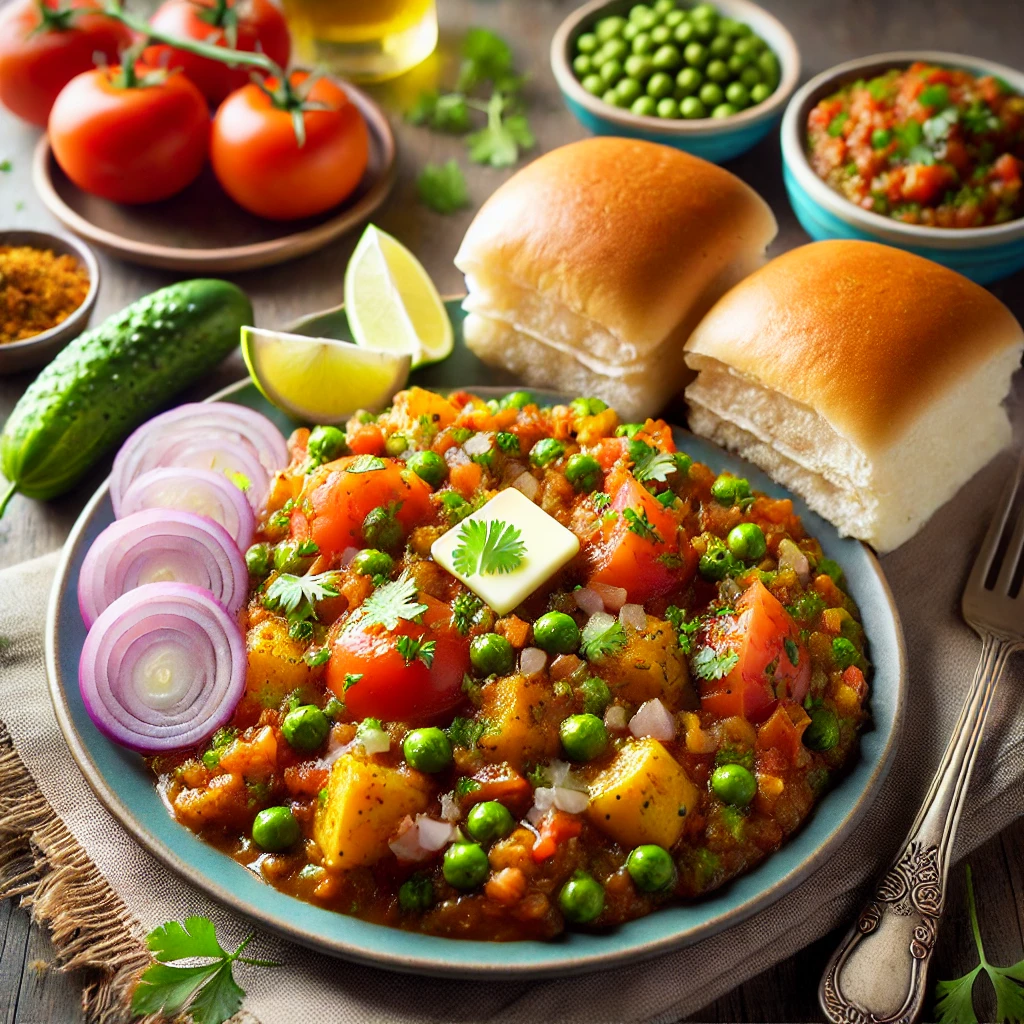
Side Dishes and Accompaniments
- Masala Papad – Adds a crunchy side to your meal.
- Raita – Cools down the spice level.
- Chilled Buttermilk – A refreshing drink to pair with Pav Bhaji.
| Nutrient | Amount per serving |
|---|---|
| Calories | 350 kcal |
| Carbohydrates | 50g |
| Protein | 8g |
| Fat | 15g |
| Fiber | 6g |
Frequently Asked Questions
1. Can I make Pav Bhaji without Pav Bhaji Masala?
Yes, you can substitute it with a mix of garam masala, red chili powder, and coriander powder.
2. Can I use store-bought pav?
Yes, you can use any soft bread rolls, but freshly baked pav tastes the best.
3. How can I make Pav Bhaji healthier?
Use less butter, increase the quantity of vegetables, and avoid white bread.
4. Can I store Pav Bhaji for later?
Yes, you can store the bhaji in the refrigerator for up to 2 days. Reheat it before serving.
5. What can I do if my Pav Bhaji is too spicy?
Add some butter, cream, or extra mashed potatoes to balance the spice level.
Pav Bhaji is a delightful street food that brings people together with its irresistible flavors. Whether you enjoy it at a roadside stall or make it at home, it’s a dish that never fails to impress.
Please don’t forget to leave a review.
JOIN OUR FAMILY NOW

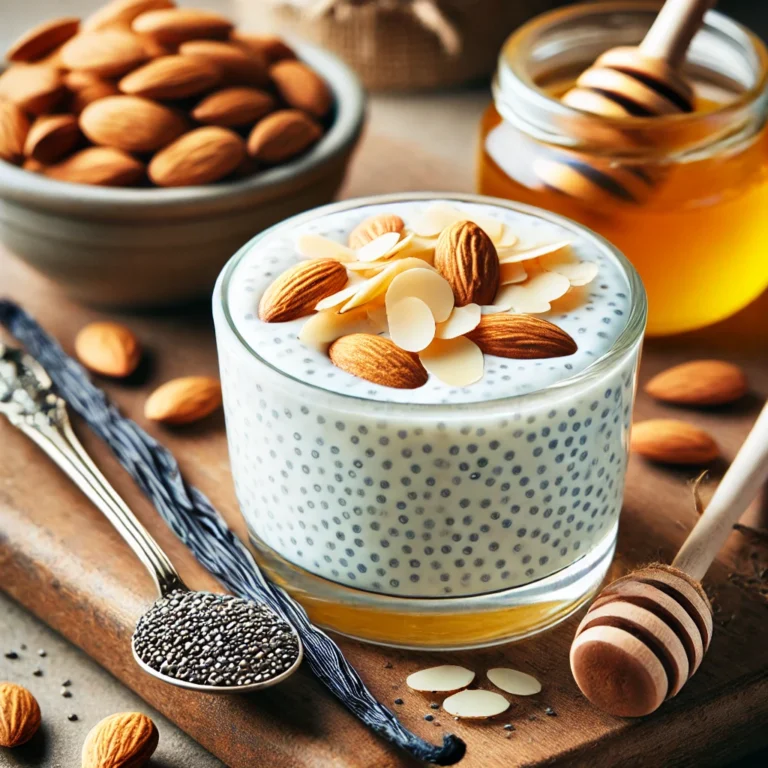
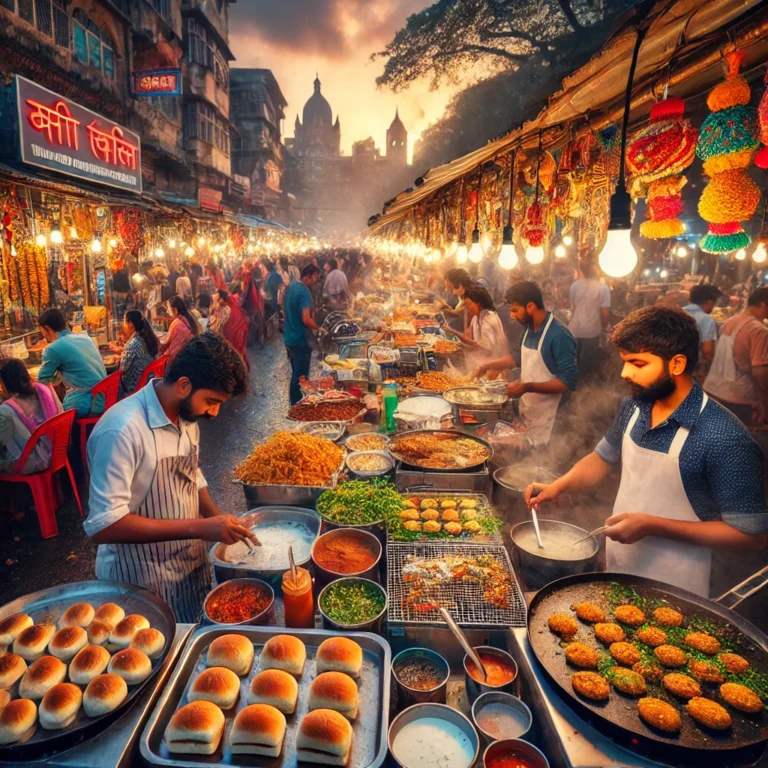
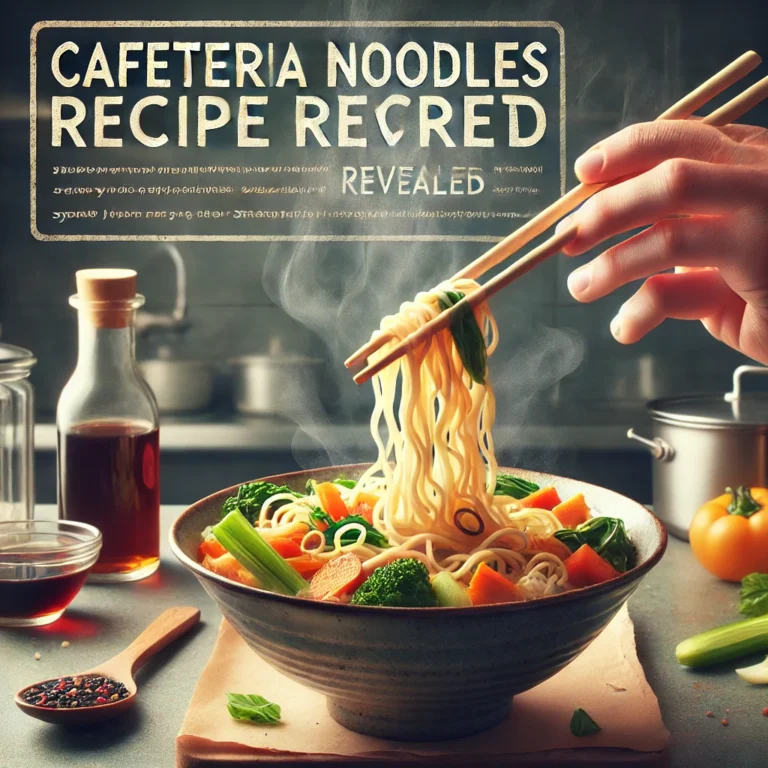
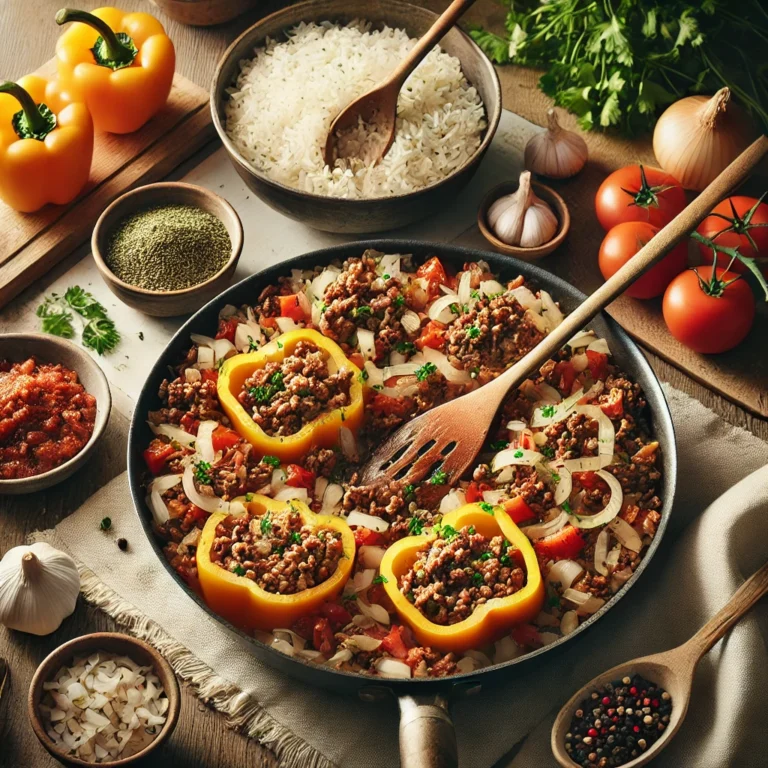
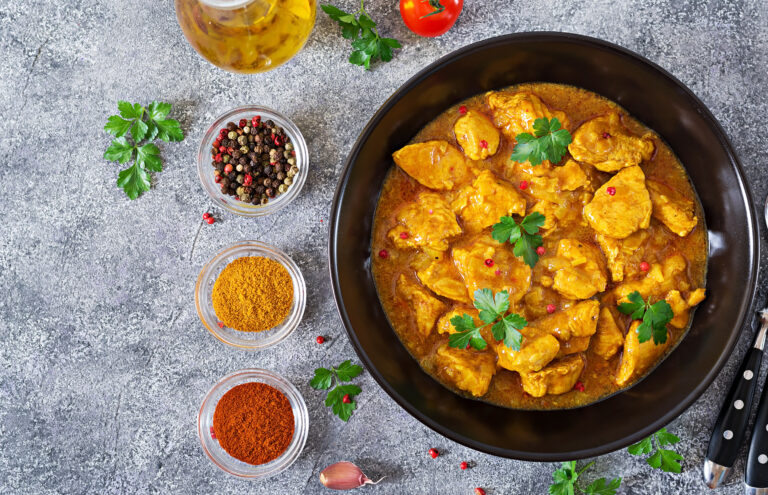
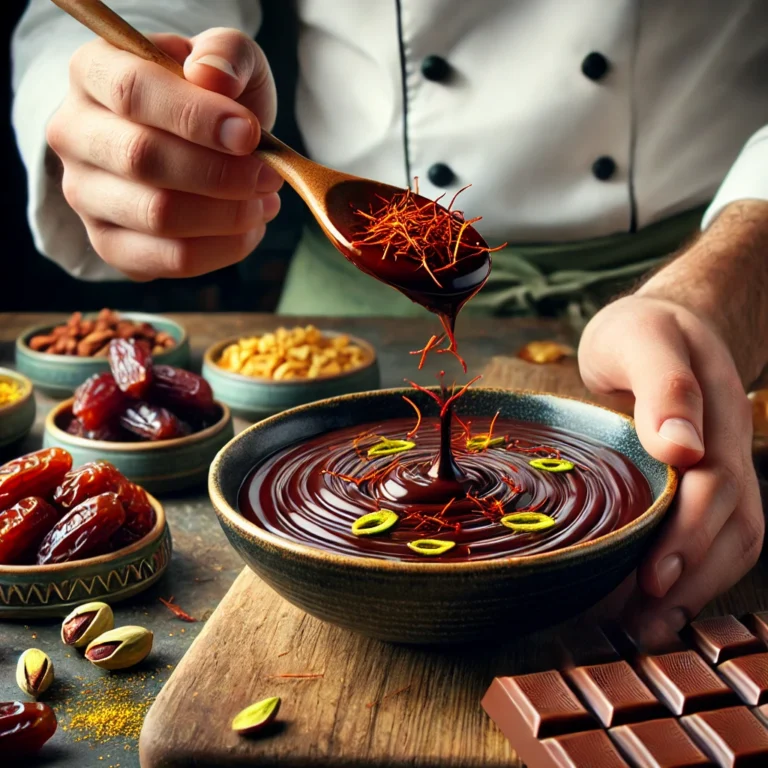
One Comment